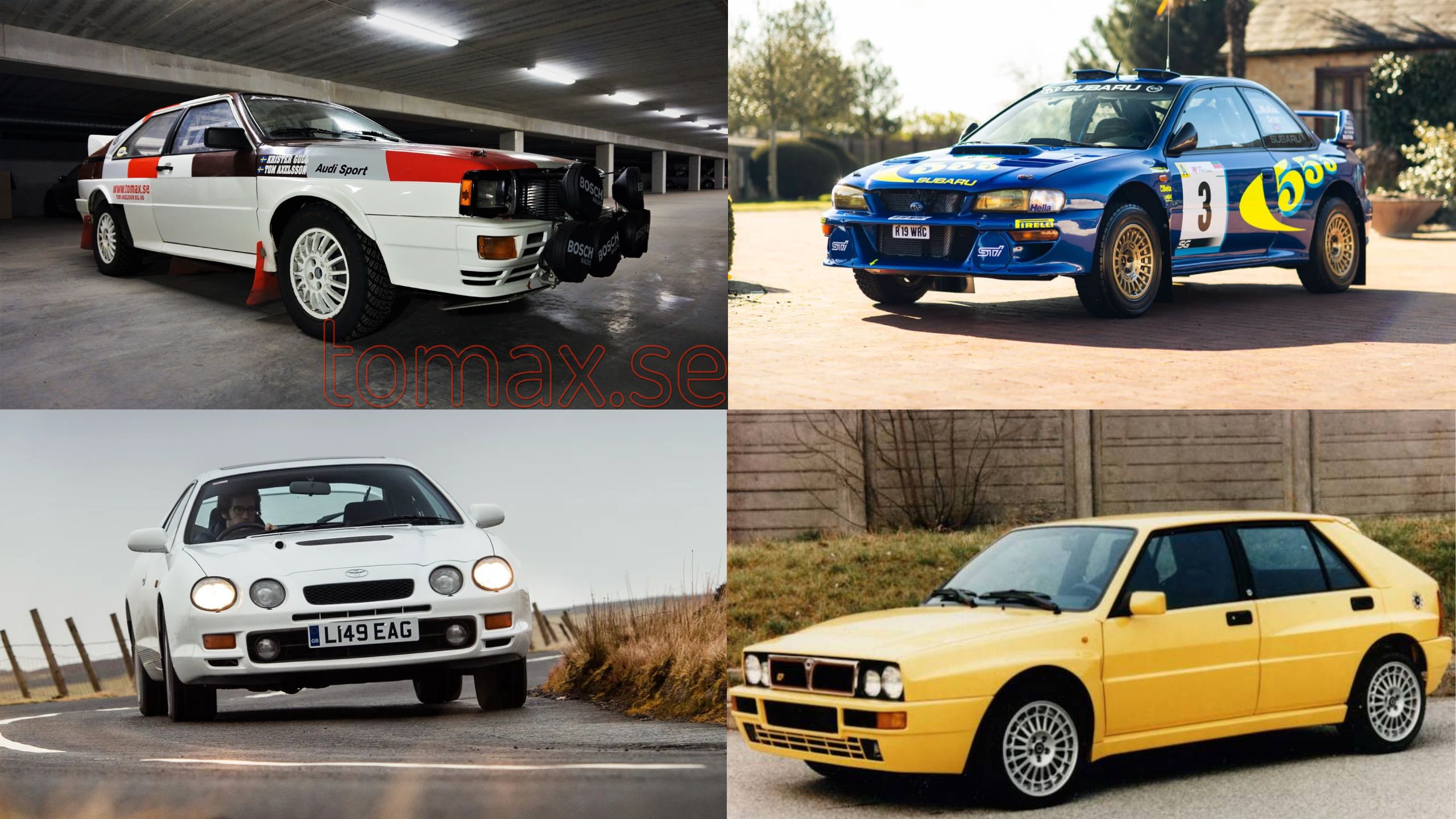Rally racing represents motorsport in its purest form, where machines battle not just against each other, but against the very elements of nature.
Over the decades, certain rally cars have transcended their competitive roles to become genuine legends, their impact extending far beyond the dirt tracks and mountain passes they conquered.
These vehicles revolutionized automotive technology, influenced production car design, and captured the imagination of motorsport enthusiasts worldwide.
From the pioneering days of rear wheel drive to the advent of all-wheel drive systems, from naturally aspirated engines to turbocharged powerhouses, these rally cars pushed the boundaries of what was possible on four wheels.
Their achievements weren’t just measured in victories and championships, but in technological innovations that eventually made their way into everyday vehicles.
This exploration looks into twelve extraordinary machines that didn’t just compete in rallies they changed the very nature of motorsport and automotive engineering.
1. Audi Quattro A1/A2 (1981-1984)
The Audi Quattro revolutionized rally racing by introducing all wheel drive technology to the sport, forever changing how rally cars would be designed and engineered.
When the Quattro debuted in 1981, its approach was so radical that many competitors initially dismissed it as unnecessarily complex.
However, the car’s dominant performances quickly silenced skeptics and ushered in a new era of rally car design, highlighting the potential of all-wheel drive in competitive motorsport.
The heart of the Audi Quattro was its 2.1-liter turbocharged five-cylinder engine, which initially produced 300 horsepower and was later upgraded to 350 horsepower in the A2 evolution model.
This engine worked in perfect harmony with the revolutionary all wheel drive system, allowing the Quattro to put power down effectively in any condition be it snow, gravel, tarmac, or mud.
The car’s ability to maintain grip and traction in diverse terrains gave it an unprecedented advantage over its rear wheel drive competitors.
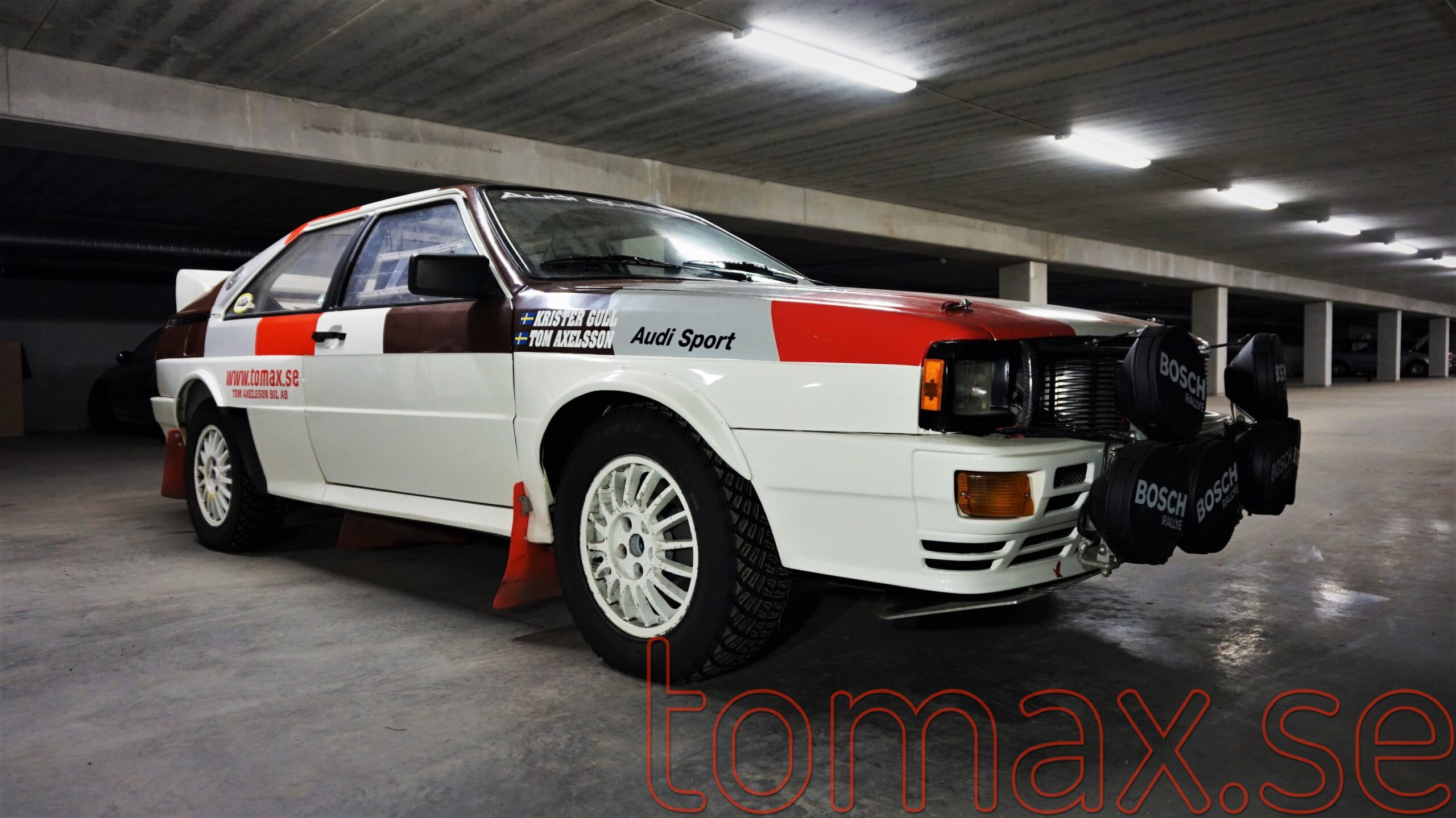
The Audi Quattro A2, introduced in 1983, brought further enhancements with reduced weight and improved aerodynamics, making the car even more formidable on the rally stages.
The car’s widened body and flared wheel arches accommodated wider tires, improving grip and stability.
These modifications, combined with the advanced all wheel drive system, allowed the Quattro to dominate rally events and secure multiple World Rally Championship (WRC) titles.
Beyond its competitive achievements, the Quattro’s impact extended far into the automotive industry.
It demonstrated the potential of all-wheel drive technology in performance applications, leading to widespread adoption in both motorsport and production vehicles.
Audi’s success with the Quattro established the company’s reputation for all wheel drive excellence, reflected in their “Quattro” branded system that continues to be a hallmark of Audi vehicles today.
The influence of the Audi Quattro can be seen in virtually every modern rally car. Its technological legacy lives on in countless performance vehicles, from high-performance sports cars to everyday road cars equipped with advanced all wheel drive systems.
The Quattro’s pioneering spirit and innovative design continue to inspire engineers and designers, ensuring its place as one of the most legendary rally cars in history.
Also Read: 12 Cars That Have the Best Fuel Efficiency Without Going Hybrid
2. Lancia Delta HF Integrale (1987-1992)
The Lancia Delta HF Integrale represents one of the most successful rally cars in history, dominating the World Rally Championship (WRC) for six consecutive years from 1987 to 1992.
This remarkable machine combined Italian design flair with ruthless engineering efficiency, creating a vehicle that was as beautiful as it was effective on the rally stages.
Throughout its career, the Delta HF Integrale evolved significantly, starting with the initial HF 4WD model and culminating in the final Evoluzione variants.
The car’s 2.0-liter turbocharged engine was continuously developed, eventually producing over 300 horsepower in its competition trim.
This power, combined with the car’s sophisticated all wheel drive system, provided exceptional traction and handling in various rally conditions.
The all-wheel-drive system of the Delta HF Integrale featured a Ferguson viscous coupling center differential and a Torsen rear differential.
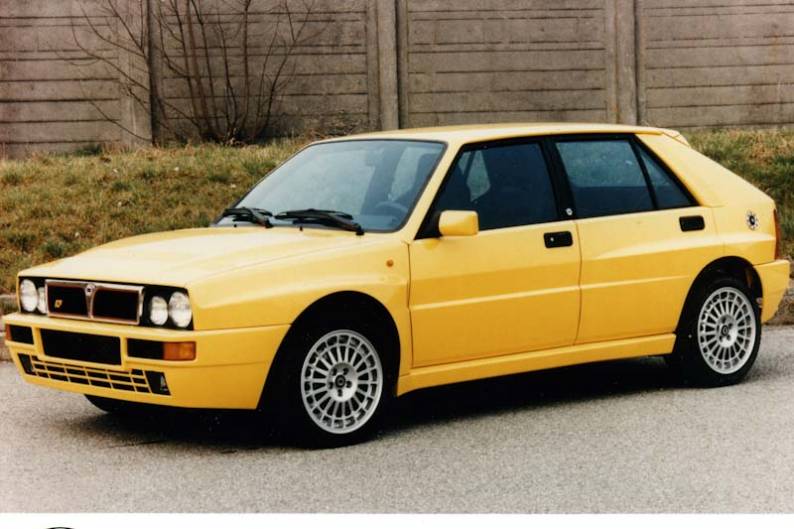
This setup allowed for precise torque distribution, ensuring optimal grip on loose surfaces and maintaining handling balance.
The car’s advanced suspension system and robust chassis further contributed to its rally success, allowing it to go through the challenging terrain with ease.
What made the Delta HF Integrale particularly special was its success in inspiring road-going versions that closely matched the rally car’s capabilities.
The various Integrale road cars, including the Integrale 8V, 16V, and Evoluzione models, became highly sought after by enthusiasts and collectors.
These road cars offered a combination of practical five-door body style with supercar-beating performance, helping to establish the modern high-performance hatchback segment.
The Delta’s rally success extended beyond the WRC titles, as it also achieved numerous victories in other prestigious rally events.
Its dominance on the rally stages earned it a legendary status, and it remains a symbol of Lancia’s engineering prowess and competitive spirit.
3. Subaru Impreza WRC (1997-2008)
The Subaru Impreza WRC, particularly in its iconic blue and gold livery, became one of the most recognizable and celebrated rally cars of all time.
Its success on the rally stages helped transform Subaru from a relatively unknown manufacturer into a global performance brand.
The World Rally Car program directly influenced the development of the road-going WRX and STI models, making the Impreza WRC a cornerstone of Subaru’s performance lineup.
The Impreza WRC featured a 2.0-liter turbocharged flat-four engine, known as the EJ20, producing around 300 horsepower under WRC regulations.
This engine, combined with Subaru’s symmetrical all wheel drive system, provided exceptional balance, traction, and stability.
The symmetrical layout of the all wheel drive system allowed for even weight distribution, enhancing the car’s handling characteristics and making it highly competitive on diverse rally surfaces.
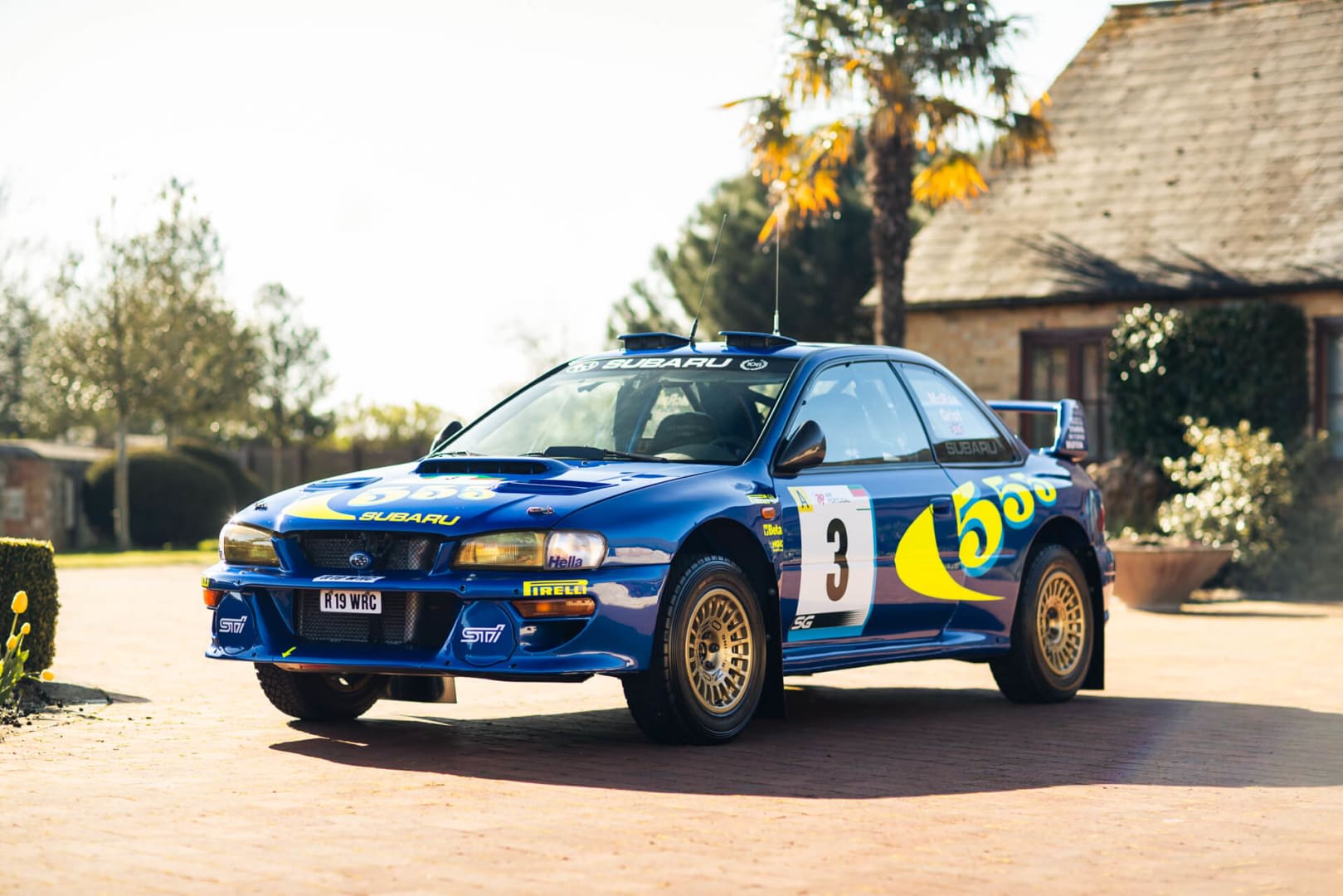
The Impreza WRC’s sophisticated active differentials played a crucial role in its performance. These differentials allowed for precise power distribution between the front and rear axles, as well as between the left and right wheels.
The car’s active center differential, front limited-slip differential, and rear limited-slip differential worked together to optimize traction and control, ensuring that the Impreza WRC could tackle the most challenging rally stages with confidence.
Different iterations of the Impreza WRC featured various aerodynamic packages, with the distinctive rear wing becoming a signature element of the car’s design.
These aerodynamic enhancements improved downforce and stability, further contributing to the car’s competitive edge.
The car’s robust chassis and advanced suspension system allowed it to withstand the rigors of rallying while maintaining exceptional handling and performance.
The Subaru Impreza WRC achieved numerous victories in the Rally Championship, with drivers like Colin McRae, Richard Burns, and Petter Solberg becoming rally legends in their own right.
The car’s success on the rally stages translated to increased popularity for Subaru’s road-going models, with the WRX and STI versions becoming highly sought after by enthusiasts around the world.
4. Mitsubishi Lancer Evolution (1993-2008)
The Mitsubishi Lancer Evolution, commonly known as the Evo, is a legendary rally car that achieved remarkable success on the rally stages.
Its rally success story is inextricably linked with Finnish driver Tommi Mäkinen, who won four consecutive World Rally Championship (WRC) drivers’ titles from 1996 to 1999 while driving the Lancer Evolution.
The car’s combination of sophisticated technology, robust reliability, and exceptional performance made it a dominant force in rallying.
The Evolution’s 2.0-liter turbocharged engine was continuously developed throughout its competition career.
This engine, known as the 4G63, utilized advanced technologies like twin-scroll turbochargers, MIVEC variable valve timing, and intercooler water spray systems.
These enhancements allowed the engine to produce competitive power outputs while maintaining reliability under the demanding conditions of rallying.
One of the standout features of the Lancer Evolution was its advanced all wheel drive system.
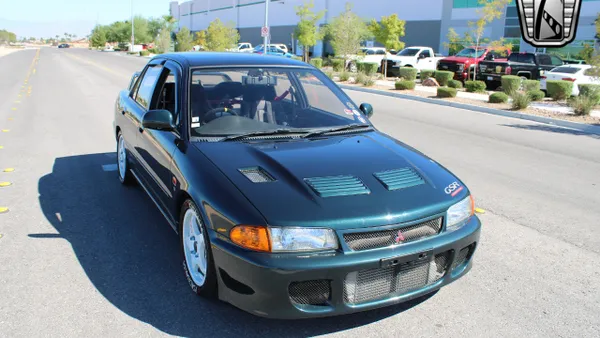
The system included active yaw control, which could precisely control torque distribution between the rear wheels to improve handling and stability.
The car also featured active center and front differentials, which optimized traction and power delivery based on real-time conditions.
This sophisticated drivetrain allowed the Evo to excel on a variety of rally surfaces, from gravel and snow to tarmac.
The Evolution’s rally success was further bolstered by its lightweight and rigid chassis, which provided a solid foundation for the car’s advanced suspension system.
The suspension, featuring MacPherson struts at the front and a multi-link rear setup, allowed for precise handling and excellent road-holding capabilities.
The car’s aerodynamic enhancements, such as front splitters and rear wings, improved downforce and stability at high speeds.
The Lancer Evolution’s success on the rally stages translated to its road-going versions, which became highly popular among driving enthusiasts.
The Evolution’s rally-bred technology, combined with its aggressive styling and performance-oriented features, made it a favorite choice for those seeking a high-performance sedan.
The Evo’s legacy continues to influence the development of modern performance cars and remains an iconic symbol of Mitsubishi’s engineering prowess.
Also Read: 10 Pickup Trucks With Next-Gen Off-Road Capabilities
5. Ford Escort RS1800 (1975-1982)
The Ford Escort RS1800 is a legendary rally car that represented the pinnacle of rear wheel drive rally car development before the all wheel drive revolution.
Its naturally aspirated 2.0-liter BDA engine, producing up to 250 horsepower, combined with a lightweight and agile chassis to create a car that rewards driver skill and precision.
The RS1800’s success on the rally stages was a testament to its exceptional engineering and performance capabilities.
The RS1800’s 2.0-liter BDA engine, developed by Cosworth, was renowned for its high-revving nature and robust performance.
It featured a dual overhead camshaft design and advanced fuel injection system, allowing it to produce impressive power outputs for its time.
The engine’s placement within the car’s lightweight chassis provided an excellent power-to-weight ratio, making the RS1800 highly competitive in rally events.
One of the key factors behind the RS1800’s success was its perfect balance of power, weight, and handling.
The car’s relatively simple mechanical layout made it reliable and easy to service during rallies, while its rear wheel drive configuration allowed for spectacular driving dynamics.
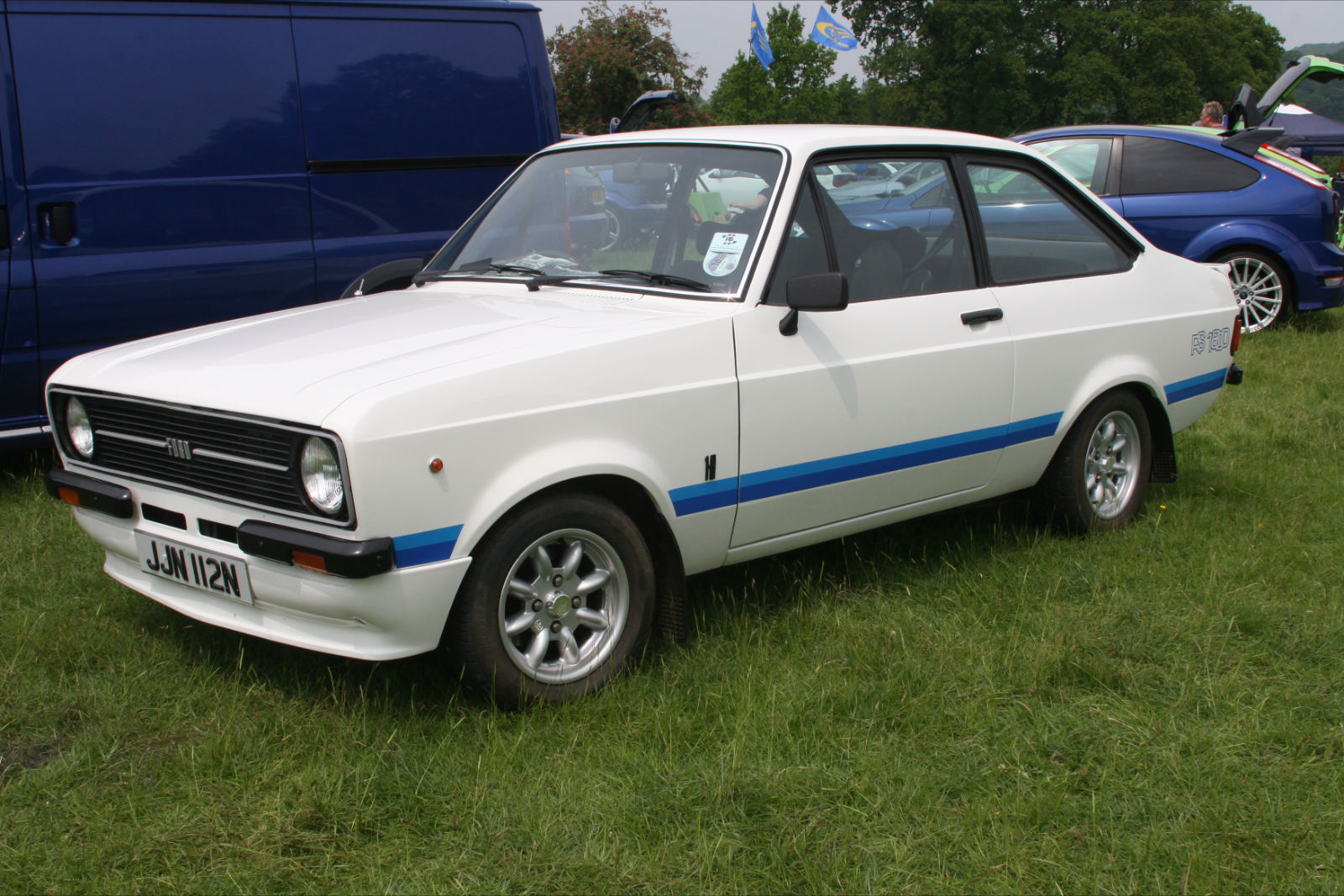
Skilled drivers like Björn Waldegård and Ari Vatanen showcased the car’s potential by executing controlled slides and drifts through challenging rally stages, creating memorable moments for fans.
The RS1800’s rally success was further supported by its robust suspension system, which featured MacPherson struts at the front and a live axle at the rear.
This setup provided excellent handling characteristics and allowed the car to maintain traction on various surfaces.
The car’s lightweight construction and aerodynamic body design also contributed to its performance, enabling it to go through tight corners and rough terrain with ease.
The Ford Escort RS1800 achieved numerous victories in the Rally Championship, securing multiple drivers’ and manufacturers’ titles.
Its dominance on the rally stages earned it a legendary status and cemented its place in rallying history.
The car’s success also influenced the development of future rally cars, showcasing the importance of balancing power, weight, and handling in competitive motorsport.
6. Peugeot 205 T16 (1984-1986)
The Peugeot 205 T16 represents the ultimate evolution of Group B rally cars, combining extreme power with sophisticated technology.
This car bore little resemblance to the regular 205 hatchback, featuring a mid-mounted 1.8-liter turbocharged engine that produced over 500 horsepower in its final Evolution 2 form.
The T16’s innovative design and performance capabilities made it a dominant force in rallying during its brief but impactful career.
The T16’s 1.8-liter turbocharged engine was a marvel of engineering, delivering immense power and torque.
The engine’s placement behind the front seats provided optimal weight distribution and contributed to the car’s exceptional handling characteristics.
The T16’s all-wheel-drive system further enhanced its performance, allowing it to maintain traction and stability on a variety of rally surfaces.
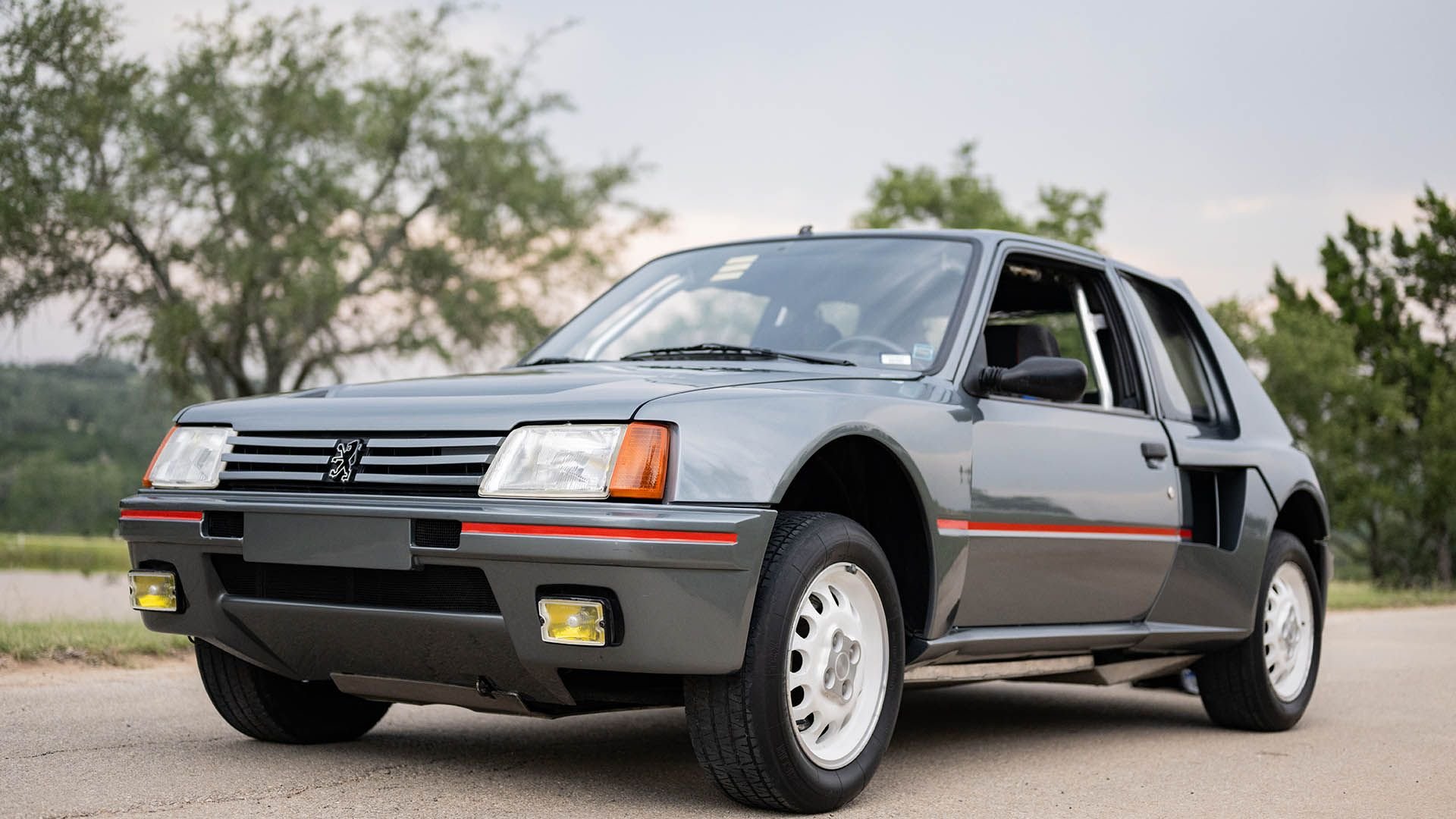
The car’s lightweight tubular frame and sophisticated suspension system enabled it to handle the enormous power output from the engine.
The T16 featured double-wishbone suspension at both the front and rear, providing excellent road-holding capabilities and allowing the car to go through rough terrain with ease.
The aerodynamic body design included advanced features like a rear-mounted wing and elaborate air intakes, which improved downforce and cooling.
The Peugeot 205 T16’s dominance in rallying was evident from its numerous victories in Rally Championship.
The car secured back-to-back manufacturers’ and drivers’ titles in 1985 and 1986, showcasing its superiority on the rally stages.
Drivers like Timo Salonen and Juha Kankkunen piloted the T16 to victory, demonstrating the car’s potential and solidifying its place in rallying history.
Despite its success, the T16’s career was cut short by the discontinuation of Group B rallying in 1986 due to safety concerns.
However, its impact on rallying and automotive engineering remains significant. The car’s innovative design and advanced technology influenced the development of future rally cars and showcased the potential of combining extreme power with sophisticated engineering.
7. Toyota Celica GT-Four (1988-1999)
The Toyota Celica GT-Four is a legendary rally car that went through several generations of development, each building on the success of its predecessor.
The car’s most famous iteration, the ST205, featured a 2.0-liter turbocharged engine producing around 300 horsepower in World Rally Championship (WRC) trim, combined with a sophisticated all wheel drive system.
The Celica GT-Four’s technical innovation and competitive performance made it a formidable contender on the rally stages.
The ST205’s 2.0-liter turbocharged engine, known as the 3S-GTE, was renowned for its reliability and performance.
The engine featured advanced technologies like water injection and an anti-lag system, which helped maintain power and responsiveness during rally events.
The car’s all-wheel-drive system included electronically controlled differentials, providing optimal traction and stability on a variety of surfaces.
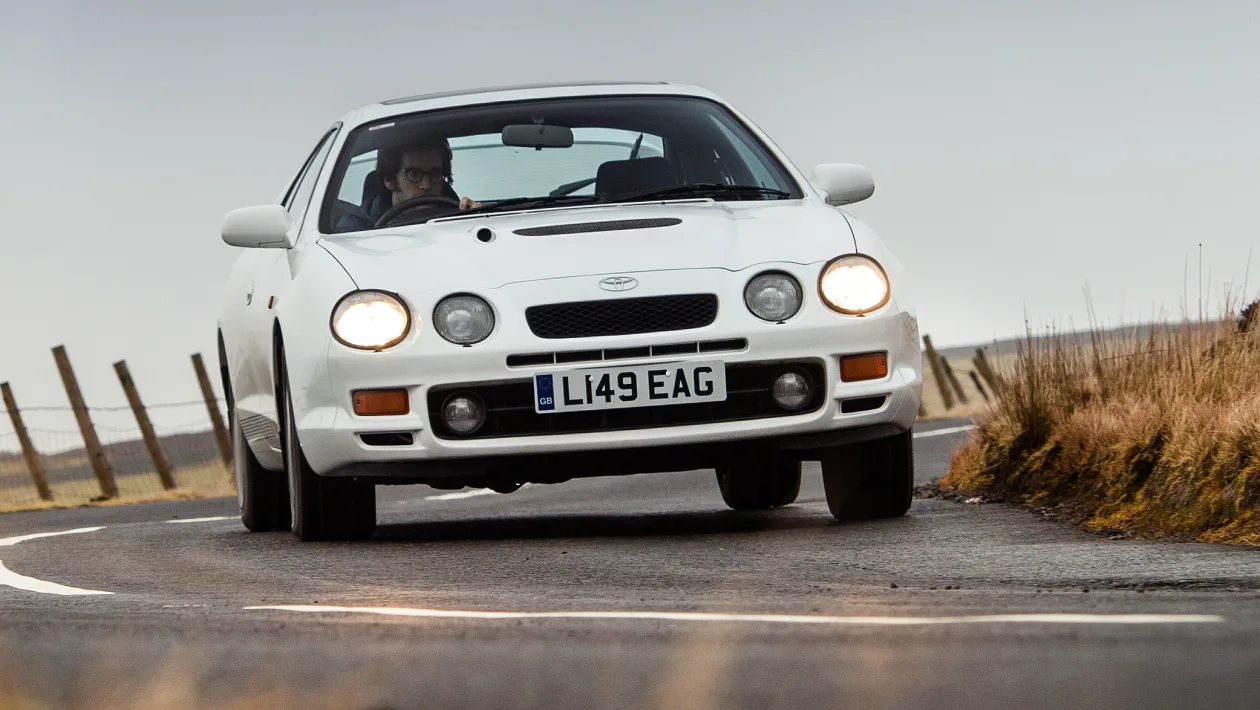
One of the most controversial aspects of the Celica GT-Four’s development was the turbo restrictor bypass system, which allowed the car to produce more power than regulations permitted.
This system demonstrated both the ingenuity of rally car development and the importance of regulation compliance.
Despite the controversy, the car’s advanced features and competitive performance solidified its place in rallying history.
The Celica GT-Four’s suspension system was designed to handle the rigors of rallying, featuring MacPherson struts at the front and a multi-link setup at the rear.
This suspension setup provided excellent handling characteristics and allowed the car to maintain stability on rough terrain.
The car’s aerodynamic design, including a prominent rear wing and front splitter, improved downforce and stability at high speeds.
The Toyota Celica GT-Four achieved numerous victories in Rally Championship, with drivers like Carlos Sainz and Didier Auriol becoming rally legends while piloting the car.
The Celica GT-Four’s success on the rally stages helped establish Toyota’s reputation for engineering excellence and competitive spirit.
8. Lancia Stratos HF (1973-1978)
The Lancia Stratos HF holds a special place in rallying history as the first car designed specifically for rallying, rather than being adapted from a road car.
Its radical wedge-shaped design by Bertone housed a Ferrari-sourced V6 engine, producing around 280 horsepower in competition trim.
The Stratos’s short wheelbase and mid-engine layout provided exceptional agility on twisting rally stages, making it a formidable contender in rallying.
The Stratos’s 2.4-liter V6 engine, sourced from the Ferrari Dino, was known for its high-revving nature and robust performance.
The engine’s placement in the middle of the car provided optimal weight distribution, enhancing the car’s handling characteristics.
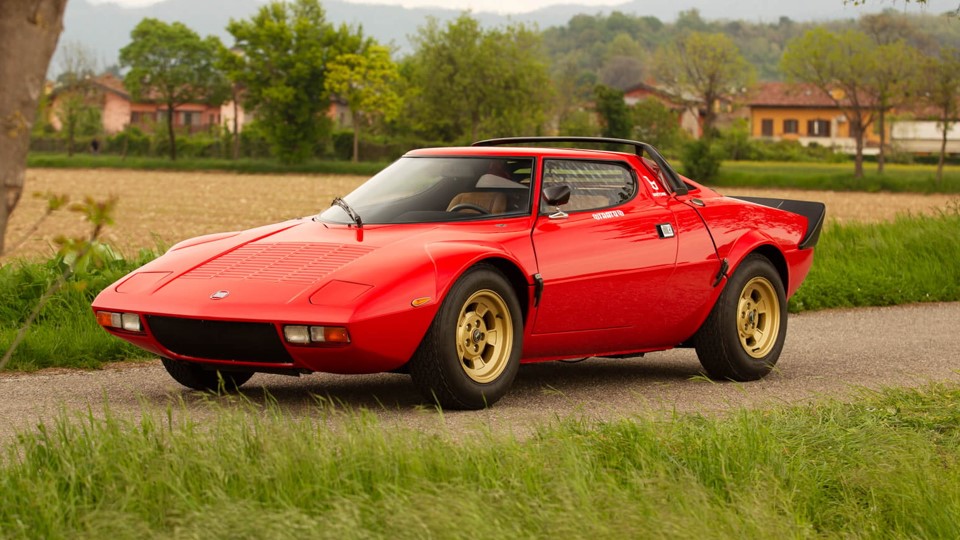
The Stratos’s lightweight fiberglass body and compact dimensions made it perfectly suited for narrow mountain roads and tight corners.
The Stratos’s purpose-built nature allowed for optimal weight distribution and handling characteristics.
Its fiberglass body kept weight down, while the compact dimensions made it perfectly suited to narrow mountain roads.
The car’s distinctive sound and spectacular driving characteristics made it a favorite among fans and drivers alike.
The Lancia Stratos HF achieved significant success in Rally Championship, securing three consecutive manufacturers’ titles from 1974 to 1976.
The car’s dominance on the rally stages was evident in its numerous victories, with drivers like Sandro Munari and Björn Waldegård showcasing the Stratos’s potential.
The car’s agility and performance made it a favorite among rally enthusiasts and solidified its place in rallying history.
The Stratos’s influence extended beyond its rally success. Its innovative design and engineering inspired the development of future rally cars, highlighting the importance of purpose-built competition vehicles.
The Stratos’s legacy lives on in modern rallying, and its impact on automotive design and engineering continues to be felt.
9. Mini Cooper S (1964-1967)
The Mini Cooper S is a legendary rally car that proved small cars could compete successfully in international rallying.
Its victories in the Monte Carlo Rally, particularly in 1964, 1965, and 1967, showcased the car’s potential and solidified its place in rallying history.
The Mini’s front wheel drive layout and compact dimensions made it exceptionally agile, while clever engineering extracted remarkable performance from its small engine.
The rally-prepared Mini Cooper S featured numerous modifications, including a strengthened body shell, upgraded suspension, and a tuned version of its 1,275cc engine producing up to 100 horsepower.
The car’s success came from its ability to maintain higher average speeds through twisting sections, making up for its power deficit on straighter stages.
The combination of lightweight, agility, and tenacious grip allowed the Mini Cooper S to compete with much larger and more powerful cars.
The Mini’s front wheel drive layout provided a distinct advantage on the tight and narrow roads of the Monte Carlo Rally.
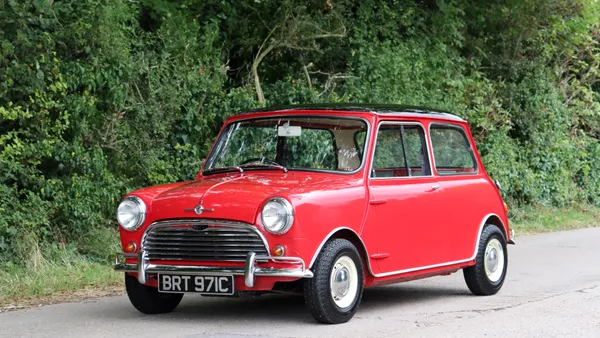
Its compact dimensions allowed it to go through sharp corners and switchbacks with ease, while its low center of gravity and wide stance provided excellent stability.
These attributes made the Mini Cooper S a formidable competitor, particularly in challenging conditions such as snow and ice.
The success of the Mini Cooper S in rallying extended beyond the Monte Carlo Rally.
The car achieved numerous victories in other prestigious events, establishing its reputation as a capable and reliable rally car.
Drivers like Paddy Hopkirk and Timo Mäkinen became rally legends while piloting the Mini Cooper S, showcasing the car’s potential and solidifying its place in motorsport history.
The Mini Cooper S’s impact extended far beyond rallying. Its success helped establish the hot hatchback category and demonstrated the sporting potential of small, front wheel drive cars.
The car’s influence on automotive design and engineering can be seen in the development of countless performance cars that followed, helping to create the modern performance car market.
10. Lancia 037 (1982-1986)
The Lancia 037 holds the distinction of being the last rear wheel drive car to win in the Rally Championship manufacturers’ title, achieving this feat in 1983 against the dominant all wheel drive Audi Quattro.
The 037’s success in rallying was a testament to its innovative design, engineering excellence, and the skill of its drivers.
The car’s combination of power, agility, and reliability made it a formidable competitor on the rally stages.
The Lancia 037 featured a supercharged 2.0-liter engine mounted longitudinally in the middle of a purpose-built chassis.
This engine, known as the Abarth 232, produced around 280 horsepower in its competition trim.
The supercharged setup provided immediate throttle response and linear power delivery, allowing the 037 to accelerate quickly and maintain high speeds on the rally stages.
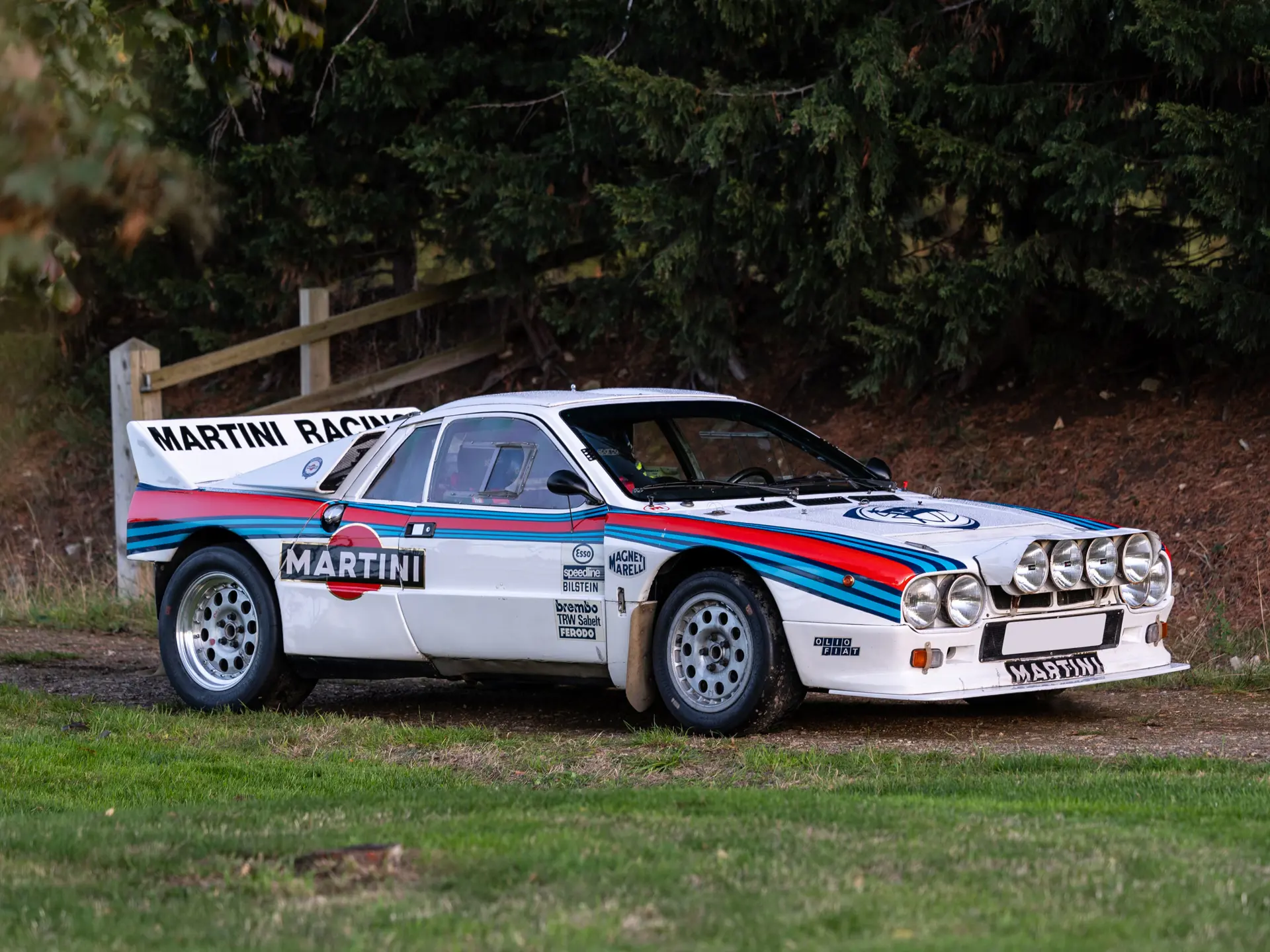
The mid-engine layout contributed to the car’s exceptional handling characteristics by providing optimal weight distribution.
The 037’s chassis was designed to be both lightweight and rigid, constructed from a combination of steel and fiberglass.
This construction allowed the car to maintain structural integrity while minimizing weight, enhancing its agility and performance.
The car’s suspension system, featuring double-wishbone setups at both the front and rear, provided excellent road-holding capabilities and allowed the 037 to go through rough terrain with ease.
One of the key factors behind the 037’s success was its simplicity and reliability.
The car’s rear wheel drive configuration and mechanical components were less complex than the all wheel drive systems of its competitors, making it easier to maintain and repair during rallies.
This reliability, combined with the car’s performance and handling, allowed the 037 to compete effectively against more technologically advanced rivals.
The Lancia 037 achieved significant success in the Rally Championship, securing numerous victories and earning the manufacturers’ title in 1983.
Drivers like Walter Röhrl and Markku Alén became rally legends while piloting the 037, showcasing the car’s potential and solidifying its place in rallying history.
The car’s success demonstrated that rear-wheel-drive cars could still compete at the highest level of rallying, even in the face of advancing all wheel drive technology.
11. Citroën DS3 WRC (2011-2016)
The Citroën DS3 WRC represented the modern era of rally cars, combining sophisticated technology with strict regulatory compliance.
This car featured a 1.6-liter turbocharged engine producing 300 horsepower, with a sophisticated all wheel drive system and advanced electronics managing power delivery.
The DS3 WRC’s success on the rally stages was a testament to its engineering excellence, innovative design, and the skill of its drivers.
The DS3 WRC’s 1.6-liter turbocharged engine was developed to comply with the new World Rally Championship (WRC) regulations that aimed to reduce engine displacement while maintaining performance.
This engine, combined with the car’s lightweight construction and advanced all wheel drive system, provided exceptional performance and handling on a variety of rally surfaces.
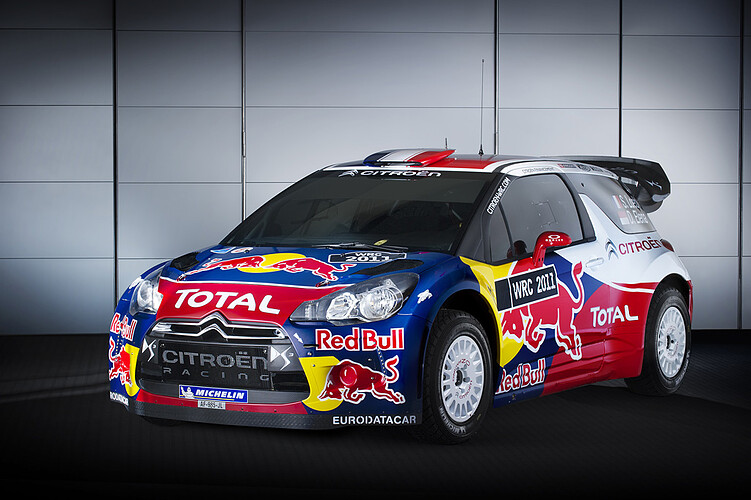
The car’s advanced electronics, including a sophisticated engine management system, allowed for precise control of power delivery and torque distribution.
The Citroën DS3 WRC’s success came from its perfect balance of power, handling, and reliability.
The car featured advanced aerodynamics, including an elaborate rear wing and front splitter designed to provide maximum downforce within WRC regulations.
The car’s sophisticated suspension system could be quickly adjusted for different surface conditions, allowing it to maintain optimal performance on gravel, tarmac, and snow.
Drivers like Sébastien Loeb and Sébastien Ogier achieved numerous victories and championship titles while piloting the DS3 WRC, showcasing the car’s potential and solidifying its place in rallying history.
The car’s impact extended to Citroën’s road car development, influencing the design and marketing of their performance models.
The DS3 WRC demonstrated how modern rally cars could combine extreme performance with reliability and safety, setting new standards for competition vehicles.
The Citroën DS3 WRC’s success on the rally stages translated to increased popularity for Citroën’s road-going models, with the DS3 becoming a highly sought-after performance car.
The car’s rally-bred technology and design influenced the development of future performance cars, showcasing the potential of combining advanced engineering with regulatory compliance.
12. Ford Focus RS WRC (1999-2010)
The Ford Focus RS WRC represented a long-term commitment to rally competition, with continuous development over more than a decade.
This car evolved through several iterations, each incorporating new technology and responding to changing regulations while maintaining the basic Focus platform.
The Focus RS WRC’s combination of performance, reliability, and innovative design made it a formidable competitor on the rally stages.
The Focus RS WRC featured a 2.0-liter turbocharged engine producing 300 horsepower under World Rally Championship (WRC) regulations.
This engine, known as the Duratec, was renowned for its robust performance and reliability.
The car’s advanced all wheel drive system provided exceptional traction and stability, allowing it to maintain competitive performance on various rally surfaces.
One of the key factors behind the Focus RS WRC’s success was its continuous development.
Ford and its engineering partners, including M-Sport, worked tirelessly to refine every aspect of the car’s design, from suspension geometry to aerodynamics.
The car’s suspension system featured MacPherson struts at the front and a multi-link setup at the rear, providing excellent handling characteristics and allowing the car to go through the rough terrain with ease.
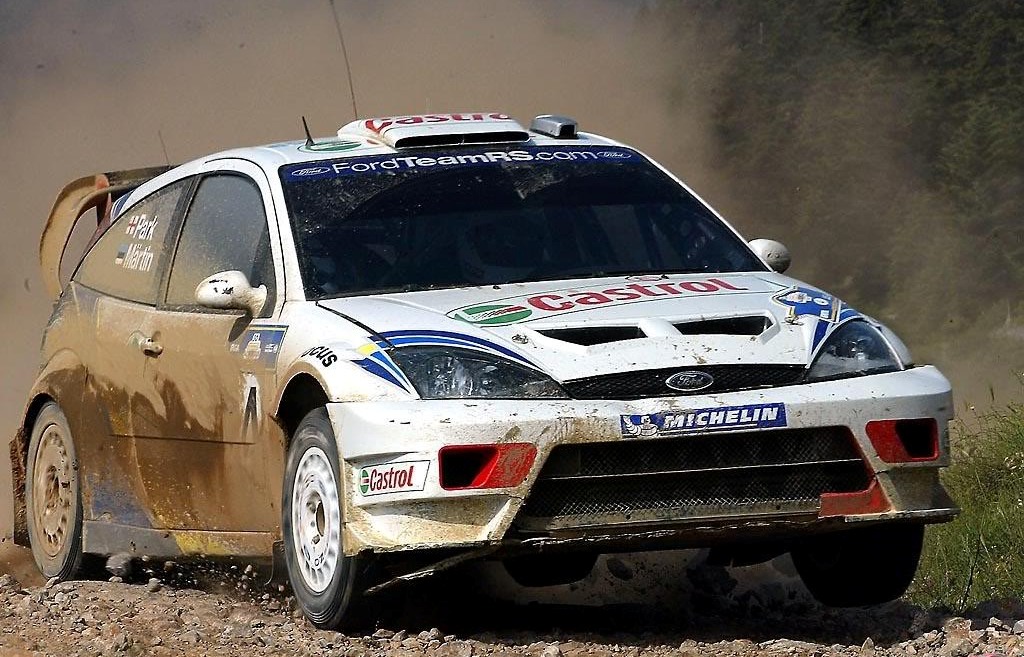
The Focus RS WRC’s aerodynamic design included advanced features like front splitters, rear wings, and side skirts, which improved downforce and stability at high speeds.
The car’s lightweight construction, combined with its robust chassis, provided an excellent balance of performance and durability.
The continuous development of the Focus RS WRC allowed Ford to stay competitive in the rapidly evolving world of rallying.
Drivers like Colin McRae, Carlos Sainz, and Mikko Hirvonen achieved numerous victories and podium finishes while piloting the Focus RS WRC, showcasing the car’s potential and solidifying its place in rallying history.
The car’s success on the rally stages helped establish Ford’s reputation for engineering excellence and competitive spirit.
Also Read: 12 Vehicles That Offer the Best Value for Road Trips

